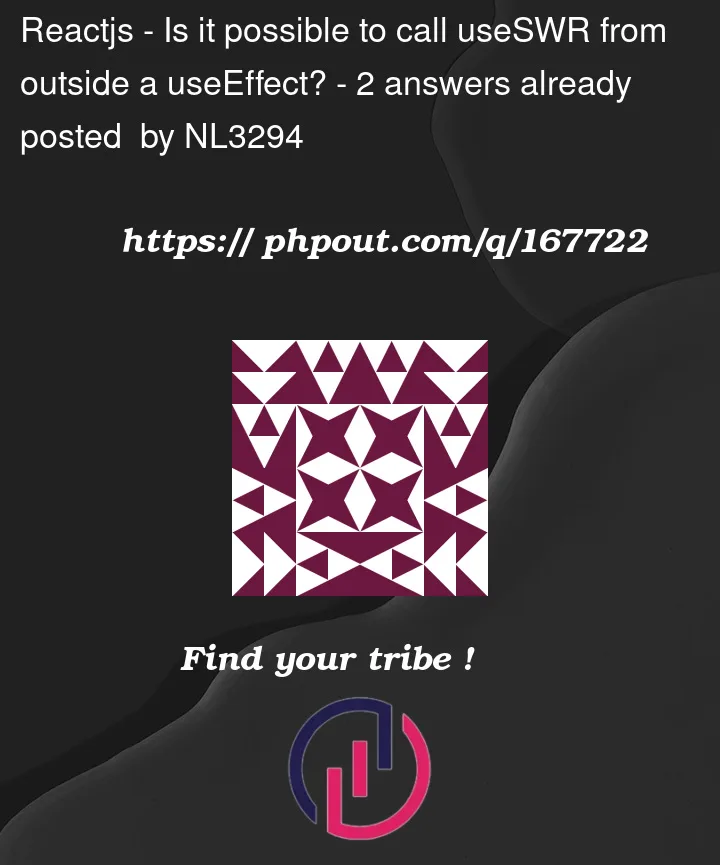My code basically looks like this:
export default function myComponent() {
async function getResults(myParams ){
const { data, error } = useSWR('/api/blah>myParams=' + myParams );
//do some other stuff...
return data;
}
useEffect(() => {
let myParams = someLogicToGetDynamicParams();
myresults= getResults(myParams );
}, [abc]);
//...
}
But I get this error:
Unhandled Runtime Error
Error: Invalid hook call. Hooks can only be called inside of the body of a function component. This could happen for one of the following reasons:
1. You might have mismatching versions of React and the renderer (such as React DOM)
2. You might be breaking the Rules of Hooks
3. You might have more than one copy of React in the same app
See https://reactjs.org/link/invalid-hook-call for tips about how to debug and fix this problem.
I understand that I should put useSWR inside of useEffect, but suppose my logic is getting long, and I want to refactor it. Does this mean I’m not allowed to refactor useSWR out into its own function (like my example above)?




2
Answers
you can simply destruct
dataanderroroutside the function and use them inside it.and if you want to make
happen inside a function, you have to name this latter starting with the prefix ‘use’ to consider it as a hook
this should compile without errors, but the first approach is the way to go.
useSwris usually used if you are fetching frequently changed data. for example, you want to show the price of ethereum on your website, you should useuseSwr.then you can call the above function in your component
I passed
paramsas prop, you could pass it fromgetServerSidePropsor you could get them inuseEffectand store them inuseState.useSwritself a hook. hook means it is hooked into the react lifecycle.useSwrknows when to rerender the component. from docs